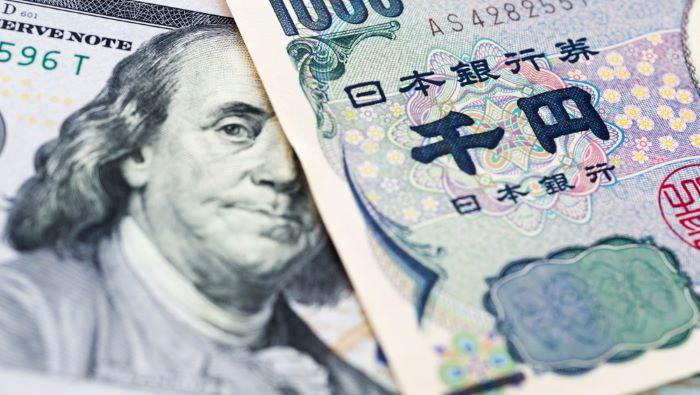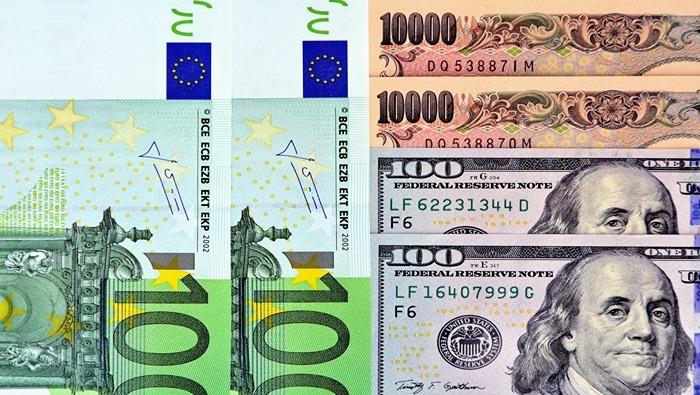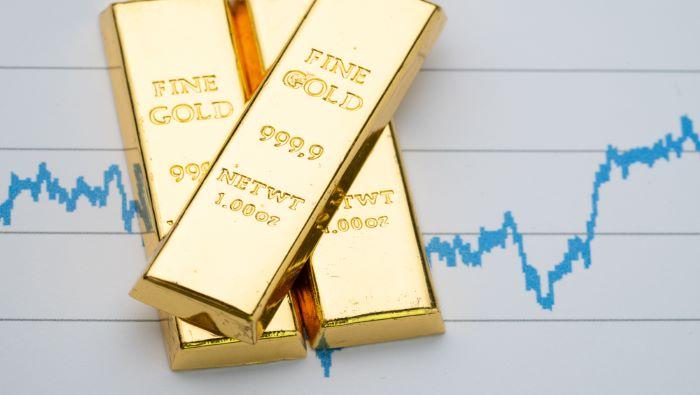2024-05-14 18:00
Eager to gain insights into gold's future path? Discover the answers in our complimentary quarterly trading guide. Request a copy now! Gold prices rebounded on Tuesday, climbing nearly 0.8% and pushing past the $2,350 threshold after the previous day's steep decline. This upward movement was fueled by a weaker U.S. dollar and subdued Treasury yields in the wake of the release of the latest batch of U.S. producer price index (PPI) information, which ultimately failed to ignite significant volatility. While April's PPI figures topped estimates, a downward revision from the previous month softened the impact. In addition, traders were reassured that the gains were primarily driven by portfolio management services, a sector with limited influence on the broader economy. Importantly, many PPI components that feed into the core PCE deflator saw only modest increases, suggesting that the disinflationary trend is not entirely dead. Most Read: Gold, EUR/USD, USD/JPY – Price Action Analysis and Technical Outlook PPI data often presents a mixed bag of signals, making it challenging to interpret. To get a clearer view of the inflation landscape, investors will be closely monitoring the upcoming CPI report due out on Wednesday morning. Both the headline and core indicators are seen rising 0.3% m-o-m, bringing the annual readings down to 3.4% from 3.5% for the former and to 3.7% from 3.8% for the latter. Weaker-than-forecast CPI figures could rekindle hopes of disinflation, bolstering bets that the Fed’s first rate cut of the cycle would come in September - a probability currently pegged at around 50%. This scenario should be bullish for gold prices. Conversely, hotter-than-anticipated inflation numbers could send interest rate expectations in a hawkish direction, boosting the U.S. dollar and weighing on precious metals. Wondering how retail positioning can shape gold prices? Our sentiment guide provides the answers you are looking for—don't miss out, get the guide now! GOLD PRICE TECHNICAL ANALYSIS Following a sluggish start to the week, gold prices rebounded on Tuesday, reclaiming the $2,350 mark. Should gains accelerate in the upcoming trading sessions, the next technical obstacle lies near trendline resistance at $2,370. Clearing this barrier could fuel increased buying activity, setting the stage for a potential rally towards $2,420, and even $2,430. In the event of a bearish reversal and dip below $2,350, there are no significant support zones nearby, suggesting that any downward movement could proceed relatively unimpeded toward $2,280 - the next relevant technical floor on the map. Further losses below this point could give way to a drop towards $2,260, a key area corresponding to the 38.2% Fibonacci level of the 2024 rally. GOLD PRICE TECHNICAL CHART Gold Price Chart Created Using TradingView https://www.dailyfx.com/news/gold-prices-bid-despite-hot-ppi-inflation-data-next-what-now-for-xau-usd-20240514.html

2024-05-14 15:17
Japanese Yen (USD/JPY) Latest Japan FinMin Suzuki highlights cohesive approach with BoJ USD/JPY defiantly ramps up to dangerous levels despite warnings Interest rate differential will continue to promote the carry trade until significantly reduced The analysis in this article makes use of chart patterns and key support and resistance levels. For more information visit our comprehensive education library Japanese Finance Minister Highlights Importance of Working with BoJ The Japanese Finance Minister has had more to say in the aftermath of the suspected FX intervention in late April as USD/JPY continues making strides to the upside, tempting officials to act again. Minister Suzuki has stressed that government and the Bank if Japan (BoJ) must work together to execute their respective policies, as the BoJ seek to raise interest rates and government officials seek to support a modest economic recovery. Suzuki went on further to repeat his usual warnings that the ministry is closely watching FX moves and that currencies need to move in a stable manner – reflecting fundamentals. Looking at a general index of yen performance vs a basket of major currencies, the yen continues to depreciate in a consistent manner. Japanese Yen Index (Equal Weighting in USD/JPY, AUD/JPY, GBP/JPY, EUR/JPY) Source: TradingView, prepared by Richard Snow USD/JPY ramps up defiantly towards dangerous levels despite warnings USD/JPY bounced off the 50-day simple moving average which proved to be the trough that followed what the majority of the market expects to have been direct FX intervention from Japanese authorities in late April. Since then, the pair has sought a return to dangerous levels, surpassing the 155 marker with little resistance. The most immediate threat to the pair is US CPI data tomorrow. The highly anticipated print follows hotter-than-expected PPI data today and rising one-year inflation outlooks from the University of Michigan (Friday) and the NY Fed survey (yesterday). Stubborn inflation runs the risk of forcing a hawkish repricing for US rate expectations which typically adds to USD strength as well as bond yields. 160.00 remains the level of resistance but Japanese officials are closely watching the volatility around FX moves – something CPI data can impact in a negative manner. Risk management remains of utmost importance across Japanese yen pairs. USD/JPY Daily Chart Source: TradingView, prepared by Richard Snow Japanese Finance Ministry Hoping for a Lower US CPI Print Despite Rising ‘Soft Data’ Recent soft data or survey data since Friday points towards a possible US CPI surprise tomorrow. Inflation expectations, one year from now, captured in the University of Michigan Consumer Sentiment report and via the NY Fed survey both rose on Friday and Monday respectively. Japan is hoping that US CPI comes down and brings the value of the dollar steadily lower over time, providing relief in USD/JPY. After what has widely been accepted as FX intervention from Japanese officials, softer US jobs data (NFP, initial jobless claims) provided the early signs that the efforts would be supported by softening US fundamentals which would naturally see the greenback head lower. Even the US-10 year yield has eased which should, in theory, alleviate upward pressure seen in USD/JPY – something that has not been observed (see the image below comparing the path of USD/JPY and 10-year bond differentials between the two nations. The main issue remains the interest rate differential with the US Fed funds rate more than 5% higher than the near zero Japanese policy rate. Until the gap closes in a meaningful manner, traders will continue to follow the carry trade – selling yen to buy dollars. USD/JPY with Yield Differential Overlay Source: TradingView, prepared by Richard Snow https://www.dailyfx.com/news/usd-jpy-surges-despite-warnings-interest-rate-differential-fuels-carry-trade-20240514.html

2024-05-14 13:00
EUR/USD Major Talking Points EUR/USD is still struggling with the 1.08 handle Germany’s ZEW expectations index rose for a tenth straight month However Jerome Powell, Eurozone growth data and US inflation numbers are all still due Get your hands on the Euro Q2 outlook today for exclusive insights into key market catalysts that should be on every trader's radar: The Euro was flat to a little lower against the United States Dollar on Tuesday as the wait for some near-term key events sucks a little oxygen out of the market. The session brought news that German economic confidence rose in May, for the tenth month straight. The closely-watched ZEW snapshot boasted an economic sentiment index reading of 47.1. That was above both the 46 expected and April’s print of 42.9. ZEW said that signs of recovery both in the eurozone and key export market China were behind the gains. The single currency didn’t get much of a boost from this, but perhaps that’s not surprising. Federal Reserve Chair Jerome Powell will speak in the US in the European afternoon. The markets tend to avoid heroics when he’s on the roster. Then there are important Eurozone Gross Domestic Product numbers coming up on Wednesday, with perhaps the week’s star turn, US Consumer Price data, following them on. The Euro has risen strongly against its US rival since its long slide to the lows of mid-April which, if you recall, had some analysts talking about parity for EUR/USD once again. However, the weeks since have seen a steady return to form for the Eurozone economy, and a general improvement in global risk appetite which has supported the Euro. However, the European Central Bank is expected to start trimming interest rates before the Federal Reserve does, with a reduction next month still on the table. It’s hard to see EUR/USD progress continuing as it has if these expectations are met. EUR/USD Technical Analysis EUR/USD Daily Chart Compiled Using TradingView Near-term EUR/USD trade remains dominated by the uptrend in place since those April lows. It’s quite well established, and it’s lower bound doesn’t come in until 1.07122, well below the market. However, the 50- and 100-day moving averages lie close together now just above it and appear to be blocking the path to a retest of the upper bound, with psychological resistance at 1.08 also bringing out the sellers. The Euro has also re-entered the wide trading band which dominated trade between mid-January and April 12. That now offers support at February 15’s low of 1.06591. On a longer-term view, the pair is stuck between a falling trend-line from mid-December and a rising one from early October last year. The former would appear in much more danger of a near-term test, but the pattern overall suggests a decline in overall volatility. Looking at the fundamentals wouldn’t suggest that a near-term stronger uptrend is likely, so an break of that downtrend line should probably be viewed with some caution. --By David Cottle for DailyFX https://www.dailyfx.com/news/euro-hovers-warily-against-the-dollar-before-the-week-s-main-events-20240514.html

2024-05-14 08:11
UK Unemployment Rate Rises to 4.3%, While Earnings Remain Elevated The UK unemployment rate rose to 4.3% in March from a prior 4.2% as tight monetary conditions are slowly having an effect on the real economy. One area where contractionary policy is not having as much of an effect is on earnings. The measure of UK wages that includes bonuses remained at 5.7% while the measure excluding bonuses remained steady at 6%. The decline in earnings growth has started to peter out, suggesting wage pressures remain. However, the Bank of England (BoE) hinted at it’s most recent meeting that it is not looking too closely into wage dynamics as it is showing to have a diminished effect on influencing the overall level of prices in the economy. Cable's immediate market reaction involved a move higher, which was ultimately reversed within minutes. GBP/USD Immediate Reaction (5-Minute Chart) Source: TradingView, prepared by Richard Snow GBP/USD appears to be eying a move lower on the back of a softer labour market and ahead of tomorrow’s US CPI data. Today’s US PPI data may provide some movement on its release if there can be any read across for tomorrow’s main inflation reading. A hotter CPI print tomorrow could buoy the greenback, sending GBP/USD lower. Recent soft data like the 1-year ahead estimates of inflation according to the University of Michigan Consumer Sentiment report, as well as the NY Fed Survey, suggest tomorrow's lower CPI estimates might be premature. 1.2500 remains a key psychological level, separating bullish and bearish plays. Bullish continuation setups may look to a move above 1.2585 for confirmation, while a move below 1.2500 and the recent spike low at 1.2446 may be sought out for greater confidence centered around bearish biases. GBP/USD Daily Chart Source: TradingView, prepared by Richard Snow https://www.dailyfx.com/news/sterling-steady-as-uk-jobless-rate-rises-wage-pressures-keep-boe-vigilant-20240514.html

2024-05-14 01:00
GOLD PRICE TECHNICAL ANALYSIS Gold (XAU/USD) dropped on Monday following an unsuccessful endeavor to take out trendline resistance at $2,375 on Friday, with prices slipping back below the $2,350 mark at the start of the new week. Should losses intensify in the days ahead, a potential support zone emerges near May’s low and the 50-day simple moving average around $2,280. Below this area, attention will shift to $2,260. On the flip side, if bulls regain decisive control of the market and propel prices higher, the first technical hurdle to keep an eye on appears at $2,350, followed by the dynamic trendline discussed earlier, now crossing $2,365. Further upward movement past this point could strengthen buying momentum, laying the groundwork for a rally towards $2,420 and possibly even $2,430. GOLD PRICE TECHNICAL CHART Gold Price Chart Created Using TradingView Want to know where the euro may be headed over the coming months? Explore all the insights available in our quarterly forecast. Request your complimentary guide today! EUR/USD FORECAST - TECHNICAL ANALYSIS EUR/USD advanced on Monday, clearing both its 50-day and 200-day simple moving averages near 1.0785. If this bullish breakout is sustained, overhead resistance stretches from 1.0805 to 1.0810. While overcoming this barrier may pose a challenge for bulls, a move beyond it could lead to relatively clear sailing towards 1.0865, the 50% Fibonacci retracement of the 2023 selloff. Conversely, if sellers mount a comeback and drive the pair below the previously mentioned simple moving average indicators, sentiment towards the euro could start souring, creating the right conditions for a pullback towards 1.0725 and 1.0695 thereafter. Additional losses below this crucial floor could trigger a descent towards 1.0650, May’s trough. EUR/USD PRICE ACTION CHART EUR/USD Chart Created Using TradingView USD/JPY FORECAST - TECHNICAL ANALYSIS USD/JPY continued its upward trajectory on Monday, consolidating above the 156.00 handle. Should this momentum pick up later in the week, resistance appears at 158.00, followed by 160.00. It's important to exercise caution with any ascent towards these levels, considering the possibility of FX intervention by Japanese authorities to bolster the yen. Such a move could quickly send the pair into a tailspin. Alternatively, if selling pressure resurfaces and prompts the pair to reverse course, initial support is positioned at 154.65. While prices are expected to stabilize around this zone during a pullback, a breakdown could precipitate a swift decline toward 153.15. If weakness persists, attention could turn to trendline support and the 50-day simple moving average near 152.50. USD/JPY PRICE ACTION CHART USD/JPY Chart Created Using TradingView https://www.dailyfx.com/news/gold-eur-usd-usd-jpy-price-action-analysis-and-technical-outlook-20240514.html

2024-05-13 17:30
Gold, Silver Analysis Gold starts the week on the back foot with the US CPI the main focus Silver respects zone of resistance ahead of US CPI Gold market trading involves a thorough understanding of the fundamental factors that determine gold prices like demand and supply, as well as the effect of geopolitical tensions and war. Find out how to trade the safe haven metal by reading our comprehensive guide: Gold volatility, measured by the Gold Volatility Index (GVZ) shot up ahead of last weekend but has eased lower to start the week. It could be argued that markets priced in a bit of caution as the Israel Defence Force advanced into Rafah, resulting in a late bid in precious metals. 30-day implied volatility revealed a lift higher and still remains relatively elevated. Current levels, however, fall some way short of the panic which ensued when US regional banks got into trouble back in March 2023. Gold Volatility (GVZ) Chart Source: TradingView, prepared by Richard Snow Gold Starts the Week on the Back Foot with US CPI the Main Focus Gold has witnessed a noticeable drop on the first trading day of the week – which isn’t all that surprising seeing that US CPI is due on Wednesday and Jerome Powell speaks on Tuesday. The precious metal appears to have tagged trendline resistance before pulling lower at the end of last week and continuing in that vein on Monday. Since the recent all-time high, gold has largely pulled back as traders and investors weigh their next moves. US Data has softened, particularly the jobs market as NFP missed the estimate and last week’s initial jobless claims printed notably higher than prior figures. This provides a more dovish view of the dollar as upside potential appears limited in the event inflation eased in April. A lower dollar tends to support gold prices but gold has risen and declined in line with the dollar – in contrast to the usual inverse relationship observed between the two. Should bears bring down gold prices from here, $2,319.50 presents the immediate level of support, followed by the swing low at $2,277. Upside targets appear at the resistance zone around $2,360 and trendline resistance. Gold (XAU/USD) Daily Chart Source: TradingView, prepared by Richard Snow Silver Respects Zone of Resistance Ahead of US CPI Silver, like gold, has enjoyed a longer-term bullish move and has also failed to retest the recent high. $28.40 proved to be a challenge for the most recent bullish advance as price action approached the zone late last week only to drop back beneath it. The zone emerged during the years of 2020 to 2021, where a consistent rejection of higher prices could be seen in the broader area. The next level of significance to the downside emerges at the 78.6% Fibonacci retracement ($27.41), followed by the swing low at $26.00. The RSI also appears to have rounded, heading lower for now. Upside targets would require a new catalyst and US inflation may help it get there but early estimates assume cost pressures will show further signs of easing in April, which may weigh on the precious metal. Resistance remains at $28.40 with the all-time high of $29.80 requiring a substantial influence to tag the significant level. Silver (XAG/USD) Daily Chart Source: TradingView, prepared by Richard Snow https://www.dailyfx.com/news/gold-and-silver-back-away-from-key-resistance-as-bullish-momentum-eases-20240513.html
